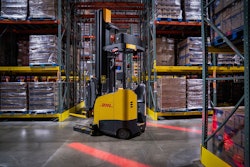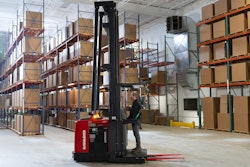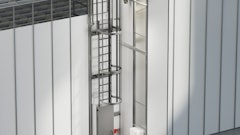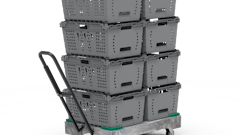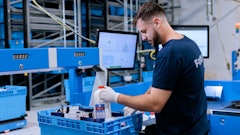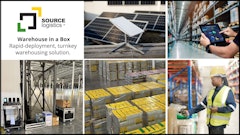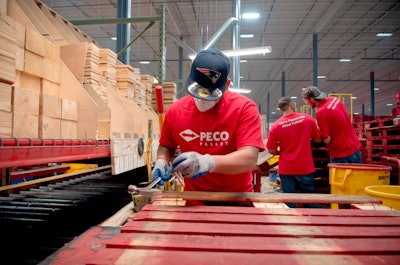
One of the outcomes of the past two years operating under the pandemic has been a dramatic increase in retailers and manufacturers pushing up all types of inventories. To hedge against supply chain disruptions – like port congestion – can cause stockouts and delay the availability of goods to consumers.
Add to that the dramatic surge in online buying. E-commerce has produced millions of smaller, more frequent shipments going directly to consumers’ homes, while more, smaller warehouses are being sited closer to end users to speed delivery of more goods over the last mile.
In response, businesses have shifted away from traditional “just-in-time” supply chain strategies, which emphasize minimal levels of inventory and safety stock. Building up inventories is now the goal. Businesses are ordering larger lots of goods and holding more product in warehouses or distribution centers for longer periods of time to protect against stockouts or line shutdowns.
Those rising inventories are consuming virtually every square foot of warehouse space. By one industry report, available commercial warehouse space in the United States is reported to be over 90% leased.
Unintended consequences and outcomes
More products held longer means more pallets sitting in warehouses for extended periods of time. That creates an unintended consequence -- increased pallet “dwell,” which is the amount of time a retailer or distributor has a pallet in their possession.
As pallets are held longer, there are fewer “turns” or reissues per year. Consequently, the available pool of pallets shrinks, impacting how much pallet inventory is in the network for all users. Without enough pallets on which to load and ship product, manufacturers can’t ship goods on a timely basis to meet demand.
Two principal factors are behind the increase in pallet turn time. One is the need to support larger inventory positions. Higher inventory levels require more pallets. And those goods – and their pallets -- are sitting in warehouses for longer periods of time.
Delay also can happen when pallets are “down-streamed.” This occurs when a pallet is sent to a secondary location, such as a local store, where it may sit for several days or weeks. Since it’s no longer at the original destination warehouse, the pallet cannot be recovered at its scheduled time. It’s an unplanned trip, causing delay that makes the pallet unavailable to other users and further limits pallet inventory that can be reissued.
Seeking balance
One might ask, if dwell times are increasing and there is so much demand, why not just build more pallets and increase the pool? The short answer is cost and capacity. Lumber prices have skyrocketed, while manufacturers of pallets have been unable to ramp up to pre-pandemic levels of production due to skilled labor and raw material shortages. Simply put, material availability and production capacity are constraining new supply.
Those factors also are driving dramatically higher costs for new pallets – when you can get them. A standard block pallet cost $25 or less to manufacture prior to the pandemic. That same pallet today is approaching $50.
Rental pallet pool operators are constantly seeking balance between what goes out of the pool to the user and when those pallets are recovered and returned and can then be reissued.
It’s all about managing flow and timing.
If someone hangs on to a pallet for too long, it disturbs the entire cycle. Again, balance in the system and the impact on supply chain efficiency depend on participants living up to their commitments. All parties must be fully invested in maintaining sufficient pallet supply and keeping costs manageable. The consequences of not doing so cause ripples throughout the supply chain that ultimately end up in higher costs of goods sold.
What should be the end game?
At the end of the day, the key to a successful, collaborative pallet rental program should be focused on total cost of service. Rental pallet pricing is typically done on a per-turn basis, with other variable costs for items like fuel and trucking (the associated costs to recover and return pallets to staging and maintenance depots) and lumber surcharges.
Every business wants to maximize the turn of inventory and maintain the optimal level of safety stock to meet consumer demand. Pallet assets – and how they are deployed --must be completely aligned with and in support of those objectives.
Sophisticated and purpose-designed pallet rental programs, balancing cost, asset availability and the flexibility and agility of national pallet networks can deliver consistent and sustainable resources and services shippers need. Yet they are only successful when all players in the pallet use cycle live up to their end of the deal and don’t act in ways that sub-optimize the network for others.






